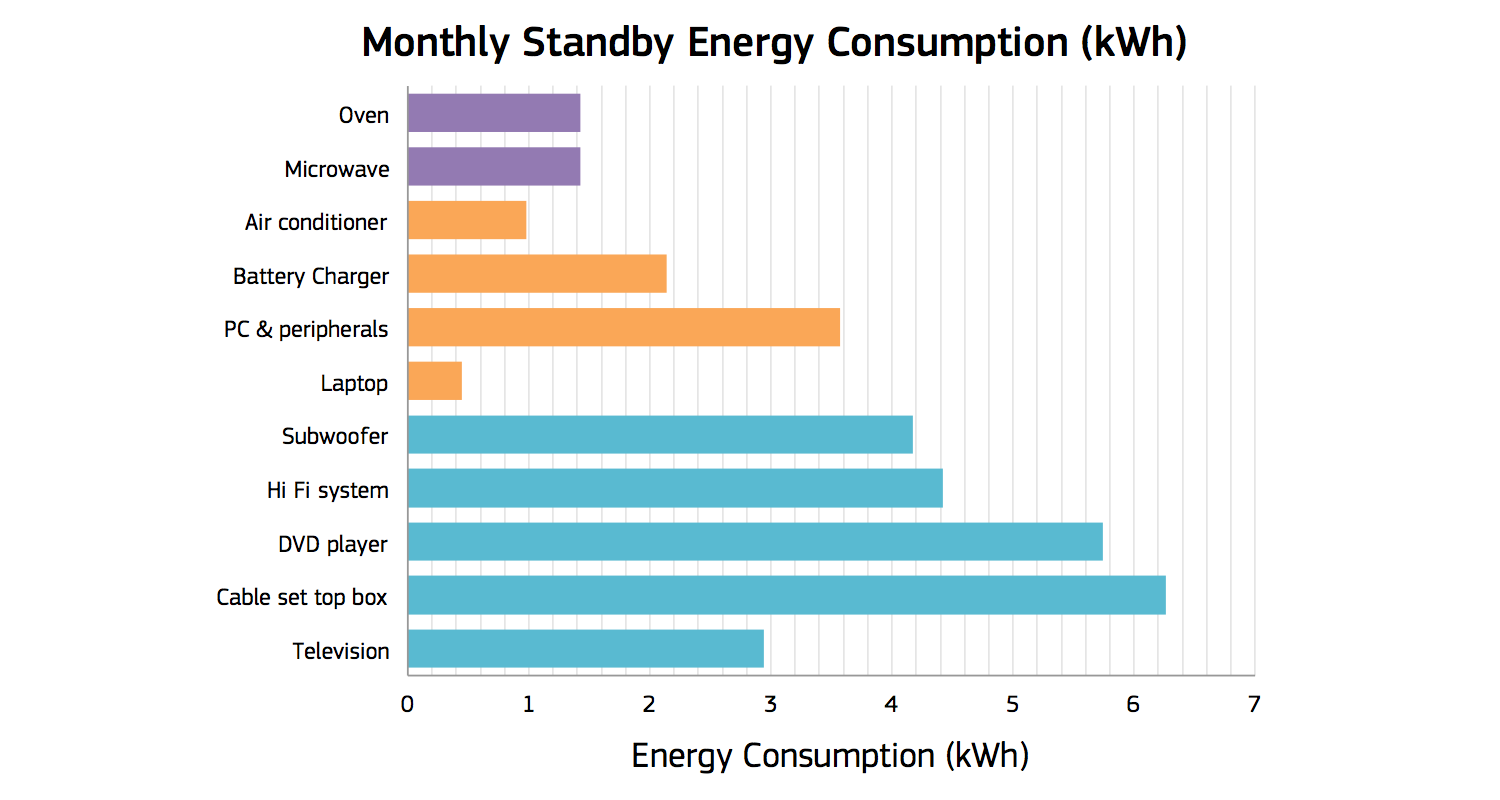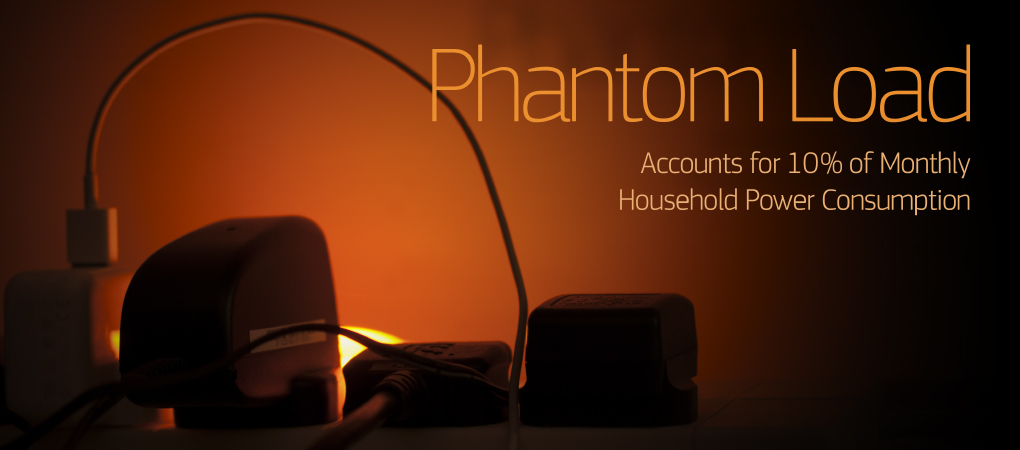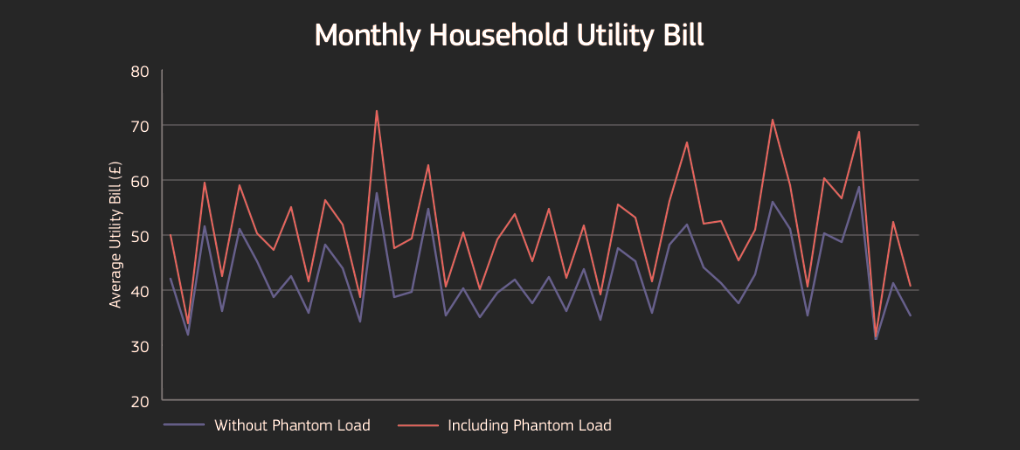Overview
Phantom Load (Standby Power) is the power drawn by electrical appliances when they are in the idle state. It is due to peripheral characteristics such as a built-in clock, remote control or quick-start features. With the increasing pervasiveness of electrical appliances, Phantom Load can be accounted for up to 10% of your monthly power bill.
Household Power Wastage
Phantom load adds to your electricity usage and therefore increases your household monthly utility bill. This will also lead to an increase in carbon emissions, as more electricity is supplied for Phantom Load.
Below is a bar chart of the monthly standby power consumption for common appliances in an average household.

From this graph, the total yearly standby power consumption is about 340 kWh, which adds £33 to the yearly utilities bill. The yearly UK household electricity bill is £453 on average (according to the Department of Energy Climate and Change in 2010 ). This means that standby power accounts for about 7.3% of the average household utility bill.
Carbon Emissions
The amount of carbon dioxide emitted per kWh varies from country to country. We use the consumption statistics from the “Household Power Wastage” section to obtain the total CO2 emission due to standby power for each household.
This value is compared with the carbon emission per household per year. The percentage of CO2 emissions due to standby power is shown below.

From these calculations, it is evident that standby power contributes a significant level of energy wastage and carbon dioxide emissions. The μWatt would effectively tackle this problem, reduce households’ utility bills and help households be environmental friendly. This is also in line with the goals and promises of many countries to reduce their carbon emissions.


